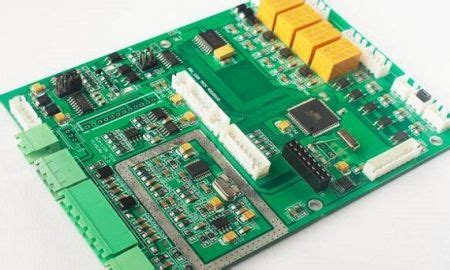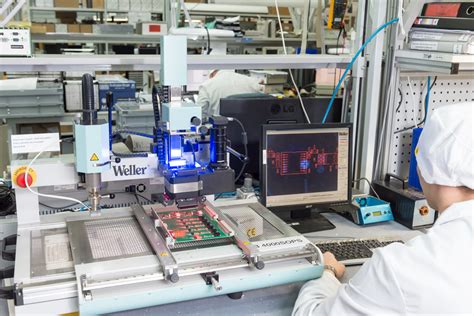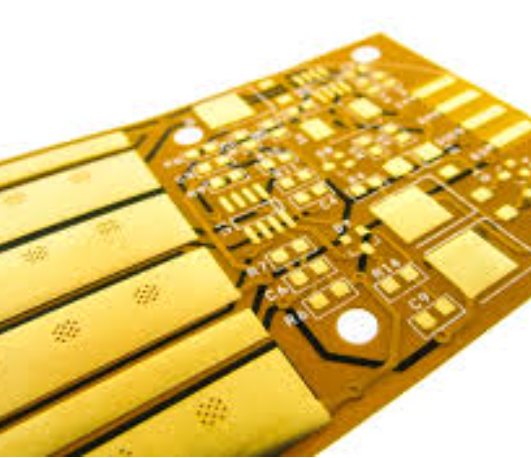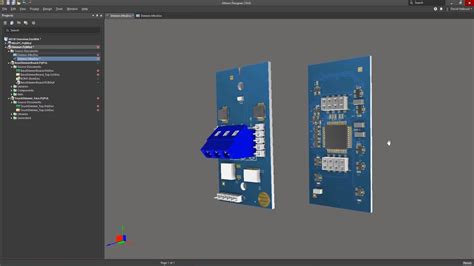Common PCB surface treatment processes
The “surface” here refers to the connection points on the PCB that provide electrical connections between electronic components or other systems and the circuits of the PCB, such as pads or contact connections.
Bare copper itself has good solderability, but it is easily oxidized and easily contaminated when exposed to air. This is why PCBs must be surface treated.
1.HASL
Wave soldering is the best soldering method in situations where perforated devices dominate. The use of hot air leveling (HASL, Hot-air solder leveling) surface treatment technology is sufficient to meet the process requirements of wave soldering. Of course, for situations where the node strength (especially contact connection) requires high requirements, the nickel/gold plating method is often used. HASL is the main surface treatment technology used worldwide, but there are three main driving forces that drive the electronics industry to consider alternative technologies to HASL: cost, new process requirements and lead-free needs.
From a cost point of view, many electronic components such as mobile communications and personal computers are becoming popular consumer products. Only by selling at cost or lower prices can we be invincible in the fierce competitive environment.
After the assembly technology developed to SMT, the PCB pads were required to use screen printing and reflow soldering processes during the assembly process. In the SMA occasion, the PCB surface treatment process initially still used HASL technology, but as the SMT devices continued to shrink, the pads and stencil openings also became smaller, and the disadvantages of HASL technology gradually exposed. The pads treated by HASL technology are not flat enough, and the coplanarity cannot meet the process requirements of fine-pitch pads.
Environmental concerns usually focus on the potential impact of lead on the environment.

2.Organic solderability preservative (OSP)
OSP protection mechanism
As the name suggests, the organic solderability preservative (OSP, Organic solderability preservative) is an organic coating used to prevent copper from oxidizing before soldering, that is, to protect the solderability of the PCB pad from being damaged. The two widely used OSPs are both nitrogen-containing organic compounds, namely benzotriazoles and imidazole organic crystalline bases (Imidazoles). They can all adhere well to the bare copper surface, and they are very specific – they only have a special preference for copper, and will not be adsorbed on insulating coatings, such as solder mask.
Triazoline will form a molecular film on the copper surface. During the assembly process, when a certain temperature is reached, this film will be melted away, especially during the reflow soldering process, OSP is more likely to evaporate. The protective film formed by the organic crystalline base of imidazole on the copper surface is thicker than that of triazoline, and can withstand more thermal cycles during the assembly process.
OSP coating process
The OSP coating process is shown in Table 1.
Cleaning: Before OSP, the first preparation is to clean the copper surface. Its main purpose is to remove organic or inorganic residues on the copper surface and ensure uniform etching.
Microetching: By corroding the copper surface, fresh and bright copper is exposed, which helps to combine with OSP. Etching can be carried out with the help of appropriate corrosive agents, such as sodium persulphate, peroxide/sulfuric acid, etc.
Conditioner: Optional steps. Depending on different situations or requirements, you can decide whether to perform these treatments.
OSP: Then apply OSP solution. The specific temperature and time depend on the specific equipment, characteristics and requirements of the solution.
Cleaning residues: After completing each step of chemical treatment above, you must clean off excess chemical residues or other useless components. Generally, one or two cleanings are sufficient. Things will turn into the opposite extreme. Excessive cleaning will cause the product to oxidize or lose its gloss, which is what we don’t want to see.
The entire treatment process must be strictly operated in accordance with the process regulations, such as strictly controlling the time, temperature and turnover process.
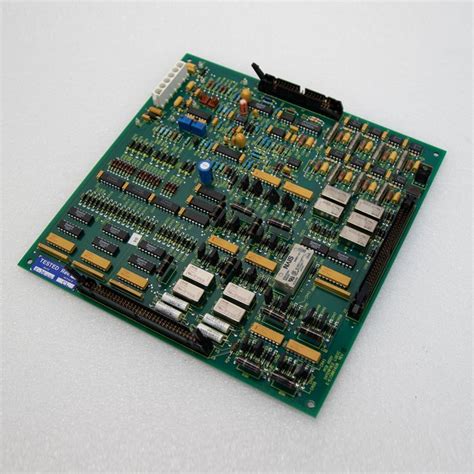
Application of OSP
After the PCB surface is treated with OSP, a thin layer of organic compounds is formed on the surface of copper, thereby protecting the copper from oxidation. The thickness of Benzotriazoles-type OSP is generally 100A°, while the thickness of Imidazoles-type OSP is thicker, generally 400A°. OSP film is transparent, and it is not easy to distinguish its existence with the naked eye, making it difficult to detect.
During the assembly process (reflow soldering), OSP can easily melt into the solder paste or acidic Flux, exposing the more active copper surface, and finally forming Sn/Cu intermetallic compounds between the components and the pads. Therefore, OSP has very good properties for treating the welding surface.
OSP does not have the problem of lead pollution, so it is environmentally friendly.
Limitations of OSP
- Since OSP is transparent and colorless, it is difficult to check and it is difficult to tell whether the PCB has been coated with OSP.
- OSP itself is insulating and non-conductive. Benzotriazoles OSP is relatively thin and may not affect electrical testing, but for Imidazoles OSP, the protective film formed is relatively thick, which will affect electrical testing. OSP cannot be used to treat electrical contact surfaces, such as the keyboard surface of keys.
- During the welding process, OSP requires a stronger Flux, otherwise the protective film cannot be eliminated, resulting in welding defects.
- During storage, the OSP surface cannot be exposed to acidic substances and the temperature cannot be too high, otherwise the OSP will evaporate.
With the continuous innovation of technology, OSP has gone through several generations of improvements, and its heat resistance, storage life, and compatibility with Flux have been greatly improved.
3.Electroless nickel immersion gold (ENIG)
Protection mechanism of ENIG
Ni/Au is plated on the copper surface by chemical methods. The deposition thickness of the inner layer Ni is generally 120~240μin (about 3~6μm), and the deposition thickness of the outer layer Au is relatively thin, generally 2~4μinch (0.05~0.1μm). Ni forms a barrier layer between solder and copper. During welding, the outer Au will quickly melt into the solder, and the solder and Ni will form Ni/Sn intermetallic compounds. The outer gold plating is to prevent Ni oxidation or passivation during storage, so the gold plating layer must be dense enough and the thickness cannot be too thin.
ENIG processing process
Cleaning: The purpose of cleaning is the same as that of OSP process, which is to remove organic or inorganic residues on the copper surface and prepare for etching and catalysis.
Etching (Microetch): Same as OSP process…
Catalyst: The function of this step is to deposit a catalyst film on the copper surface, thereby reducing the active energy of copper, so that Ni is easier to deposit on the copper surface. Palladium and ruthenium are both catalysts that can be used.
Chemical nickel plating: The specific process will not be described in detail here. Nickel deposition contains 6-11% phosphorus. Depending on the actual specific use, nickel may be used as a welding surface or as a contact surface, but in any case, it must be ensured that the nickel has sufficient thickness to achieve the role of protecting copper.
Immersion gold: In this process, the purpose is to deposit a thin and continuous gold protective layer. The thickness of the main gold should not be too thick, otherwise the solder joint will become very brittle, seriously affecting the reliability of welding electricity. Like nickel plating, the working temperature of immersion gold is very high and the time is also very long. During the immersion process, a replacement reaction will occur-on the surface of nickel, gold replaces nickel, but when the replacement reaches a certain degree, the replacement reaction will automatically stop. Gold is very strong, resistant to abrasion, high temperature, and not easy to oxidize, so it can prevent nickel from oxidation or passivation, and is suitable for working in places with high strength requirements.
Cleaning residues: After completing each step of the above chemical treatment, the excess chemical residues or other useless components must be cleaned off. Generally, one or two cleanings are sufficient. Things will turn to the opposite extreme. Excessive cleaning will cause the product to oxidize or lose its gloss, which is what we don’t want to see.
Application of ENIG
The surface of the PCB treated with ENIG is very flat and has good coplanarity. It is the best choice for the contact surface of the key. Secondly, ENIG has excellent solderability, and gold will quickly melt into the molten solder, thereby exposing fresh Ni.
Limitations of ENIG
The process of ENIG is relatively complicated, and if you want to achieve good results, you must strictly control the process parameters. The most troublesome thing is that the surface of the PCB treated with ENIG is prone to black pad effect during ENIG or welding, which has a catastrophic impact on the reliability of the solder joints. The mechanism of black pad generation is very complicated. It occurs at the interface between Ni and gold, and is directly manifested as excessive oxidation of Ni. Too much gold will make the solder joint brittle and affect reliability.
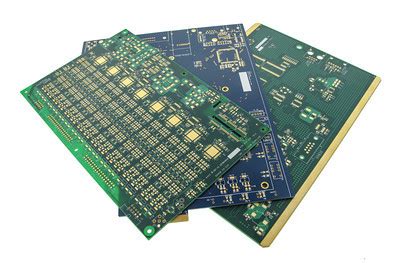
4.Electroless Nickel Palladium Immersion Gold (ENEPIG)
Principle of Electroless Nickel Palladium Immersion Gold
Compared with ENIG, ENEPIG has an extra layer of palladium between nickel and gold. The deposition thickness of Ni is 120-240μin (about 3-6μm), the thickness of palladium is 4-20μin (about 0.1-0.5μm), and the thickness of gold is 1-4μin (about 0.02-0.1μm). Palladium can prevent corrosion caused by substitution reaction and prepare for immersion gold. Gold is tightly covered on palladium to provide a good contact surface.
Process steps of Electroless Nickel Palladium Immersion Gold
Application of Electroless Nickel Palladium Immersion Gold
Electrical nickel palladium immersion gold is widely used and can replace electroless nickel immersion gold. During the welding process, palladium and gold will melt into the molten solder to form nickel/tin intermetallic compounds.
Limitations of nickel-palladium immersion gold
Although nickel-palladium immersion gold has many advantages, the price of palladium is very expensive. At the same time, palladium is a scarce resource and is mainly released in the former Soviet Union. At the same time, like nickel-palladium immersion gold, its process control requirements are very strict.
5.Immersion silver
The working principle of immersion silver
Through the immersion silver process, a thin (5-15μin, about 0.1-0.4μm) and dense silver deposition provides an organic protective film. The copper surface is sealed with silver, which greatly extends its life. The surface of immersion silver is very flat and has good solderability.
Working steps of immersion silver
Other steps will not be repeated here. The purpose of pre-immersion is mainly to prevent the introduction of contaminants. The immersion silver process is also a displacement reaction process in which silver replaces copper on the copper surface. The silver deposition layer contains both organic additives and organic surfactants. The organic additives are used to ensure the flatness of the immersion silver, while the organic surfactants can protect the PCB from silver absorbing moisture during storage.
Application of immersion silver
The immersion silver soldering surface has good solderability. During the soldering process, silver will melt into the molten solder paste and form Cu/Sn intermetallic compounds on the soldering surface like HASL and OSP. The immersion silver surface has good coplanarity and does not have the same conductive obstacles as OSP, but its strength is not as good as gold when used as a contact surface (such as the key surface).
Limitations of immersion silver
One problem that cannot be ignored with immersion silver is the electron migration of silver. When exposed to a humid environment, silver will produce electron migration under the action of voltage. The occurrence of electron migration can be reduced by adding organic components to silver.
6.Immersion tin
Immersion tin principle
The immersion tin process is used for two reasons: one is that the immersion tin surface is very flat and has good coplanarity; the other is that immersion tin is lead-free. However, Cu/Sn intermetallic compounds are easily generated during the immersion tin process, and the solderability of Cu/Sn intermetallic compounds is very poor.
If the immersion tin process is used, two obstacles must be overcome: particle size and the generation of Cu/Sn intermetallic compounds. Tin particles must be small enough and non-porous. It is reasonable to deposit tin at least 40μin (1.0μm) to provide a pure tin surface to meet solderability requirements.
The process steps of tin immersion are basically similar to pre-silver immersion, so I will not repeat them here.
Application and limitations of tin immersion
The biggest weakness of tin immersion is its short life, especially when stored in a high temperature and high humidity environment, the Cu/Sn intermetallic compound will continue to grow until it loses solderability.
7.Comparison:
Each surface treatment process has its own unique features and different application ranges. But nickel-palladium immersion gold (ENEPIG) is a universal treatment method that can meet the requirements of various assembly occasions.



